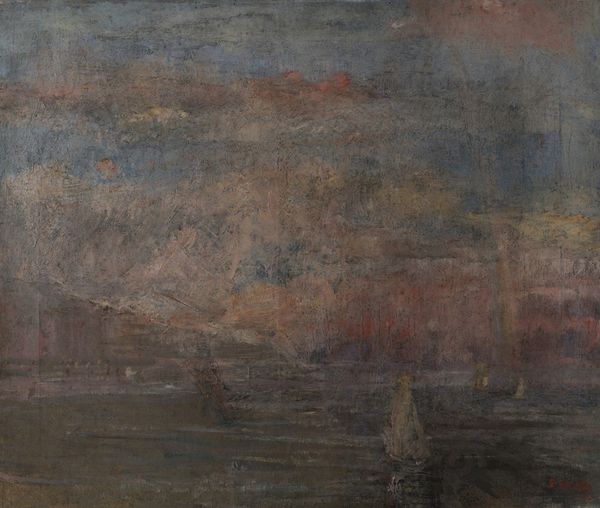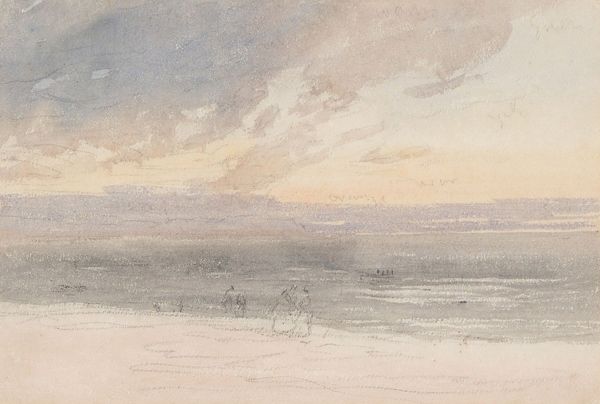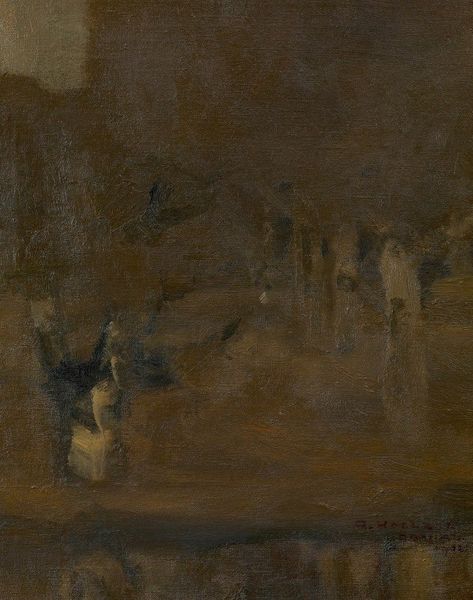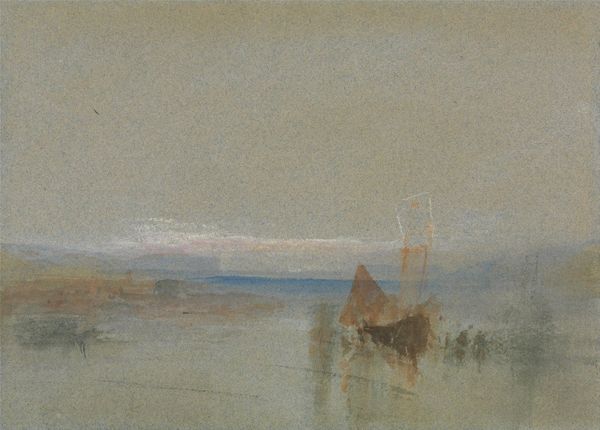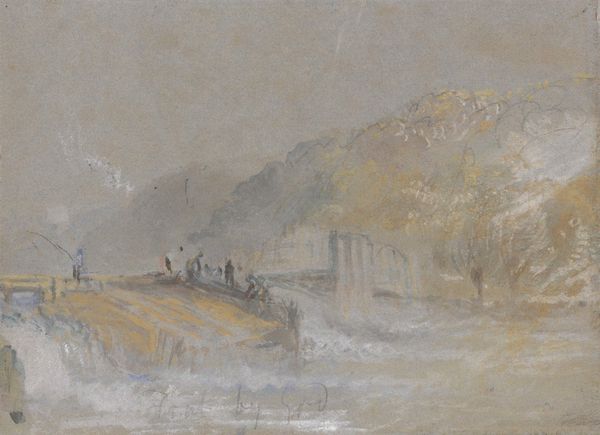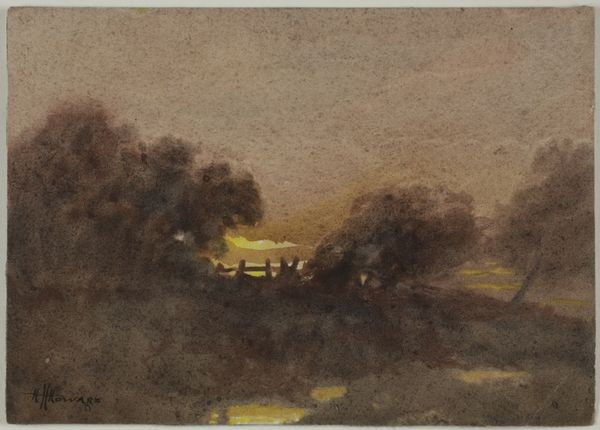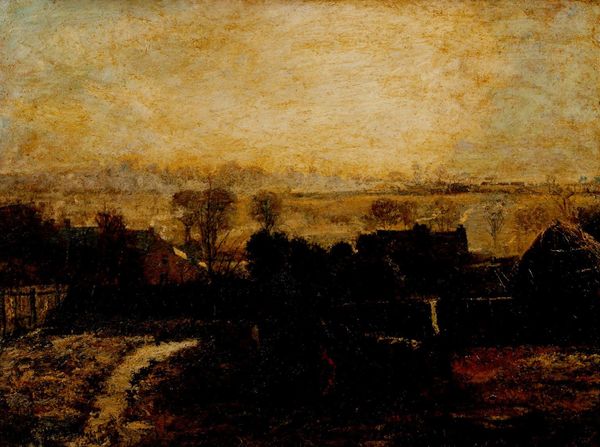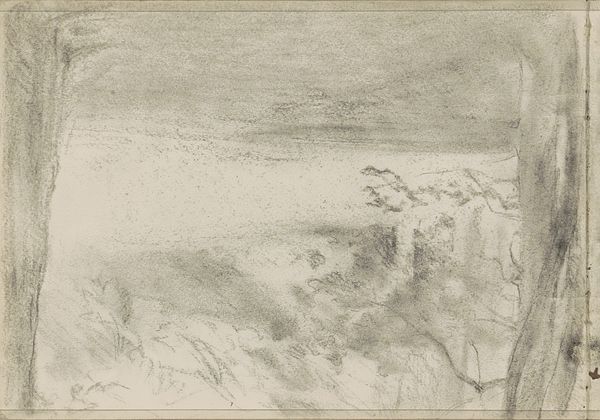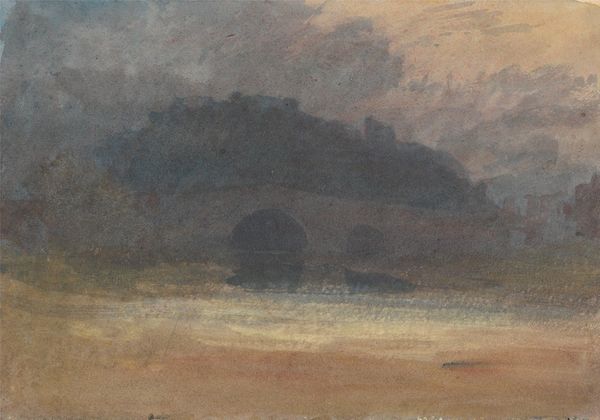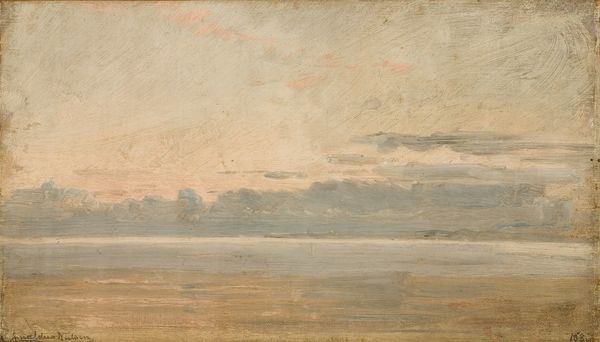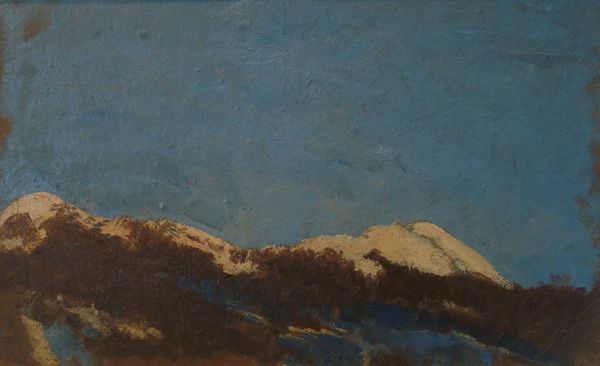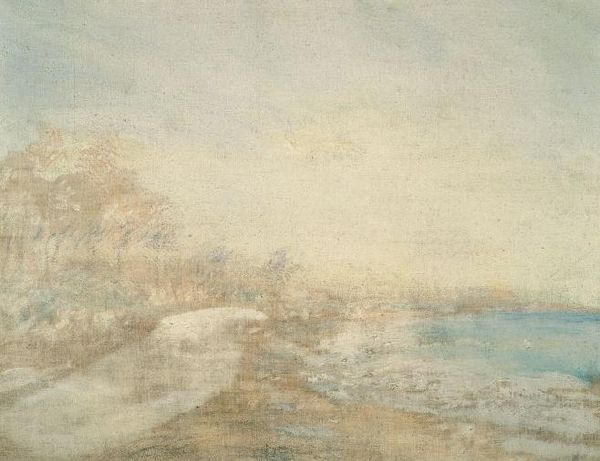
Copyright: Public Domain: Artvee
Editor: This is "Moonlight Landscape," a watercolor and charcoal drawing on paper, created by David Cox around the 1850s. It has this wonderfully ethereal, almost dreamlike quality. What symbols do you see within it? Curator: Indeed, the ethereal quality strikes first, doesn't it? That pale crescent… almost an echo of earlier lunar deities, a faint, distant Artemis, perhaps, presiding over human affairs. And look how the city lights glimmer in the distance – little points of civilization holding their own against the vastness. The looming structures in the foreground are like monuments that hint at time and civilization and their ever-changing relations, aren't they? Editor: Monuments as records... what sort of cultural memory does the piece evoke for you? Curator: It makes me think of ruins and how ruins work on our memories – a certain sense of loss, certainly, of things decayed, yet also this incredible sense of endurance. This composition also reminds of "Sublime", something powerful enough to inspire awe and maybe even fear, an aesthetic strategy so pervasive across periods, no? It captures a moment of quiet reflection in the face of something far grander than ourselves. How do those elements sit with you? Editor: It’s fascinating to consider the interplay between vulnerability and power within the symbolic language of ruins and natural phenomena, but it would be very sad if these memories vanished along with the symbols in the course of time! It's funny that such a delicate artwork evokes so much deep, heavy history. Thank you for the lesson! Curator: And thank you, this reminds of our responsibility to unpack the meanings within symbols, keeping cultural memories alive.
Comments
No comments
Be the first to comment and join the conversation on the ultimate creative platform.

